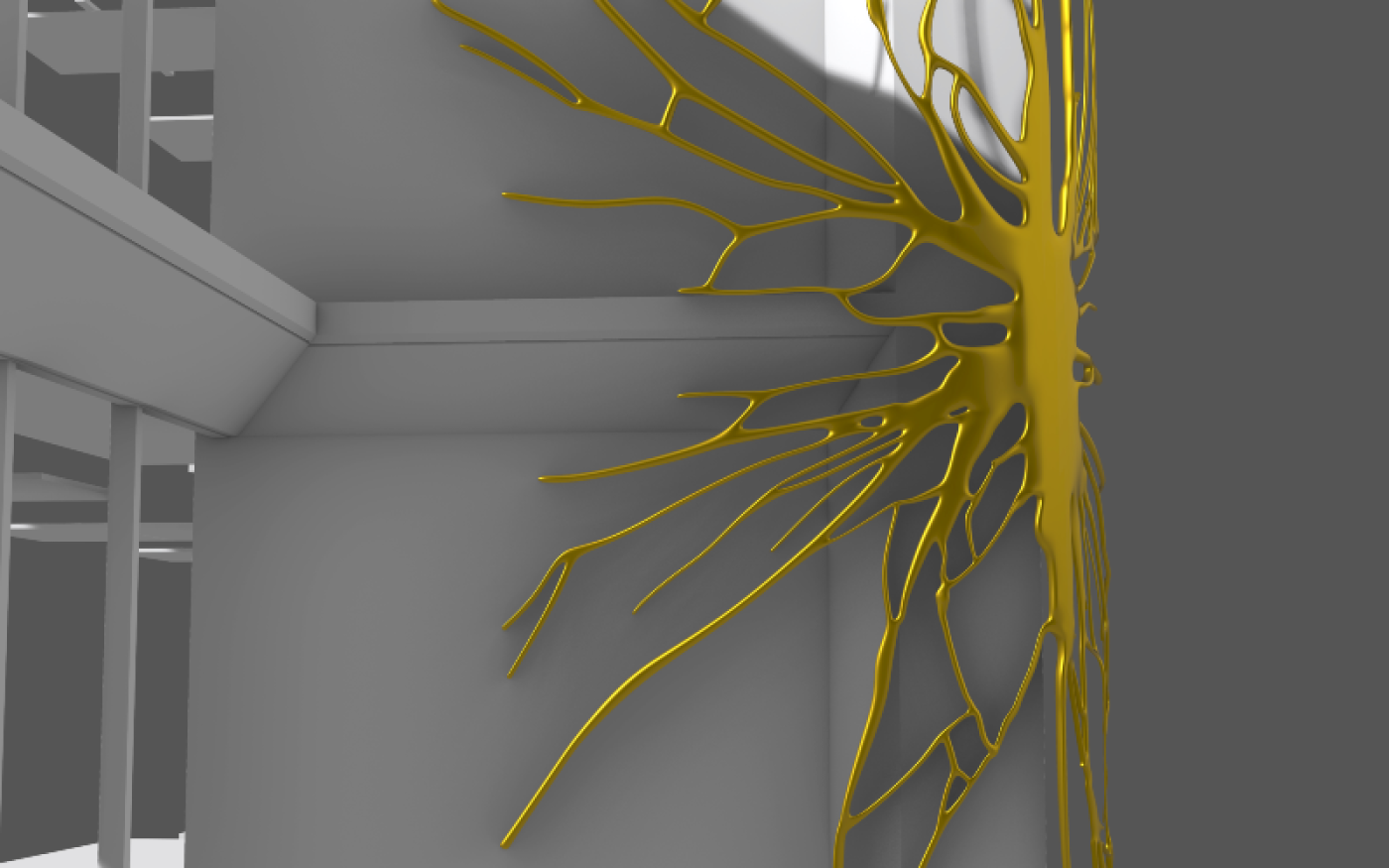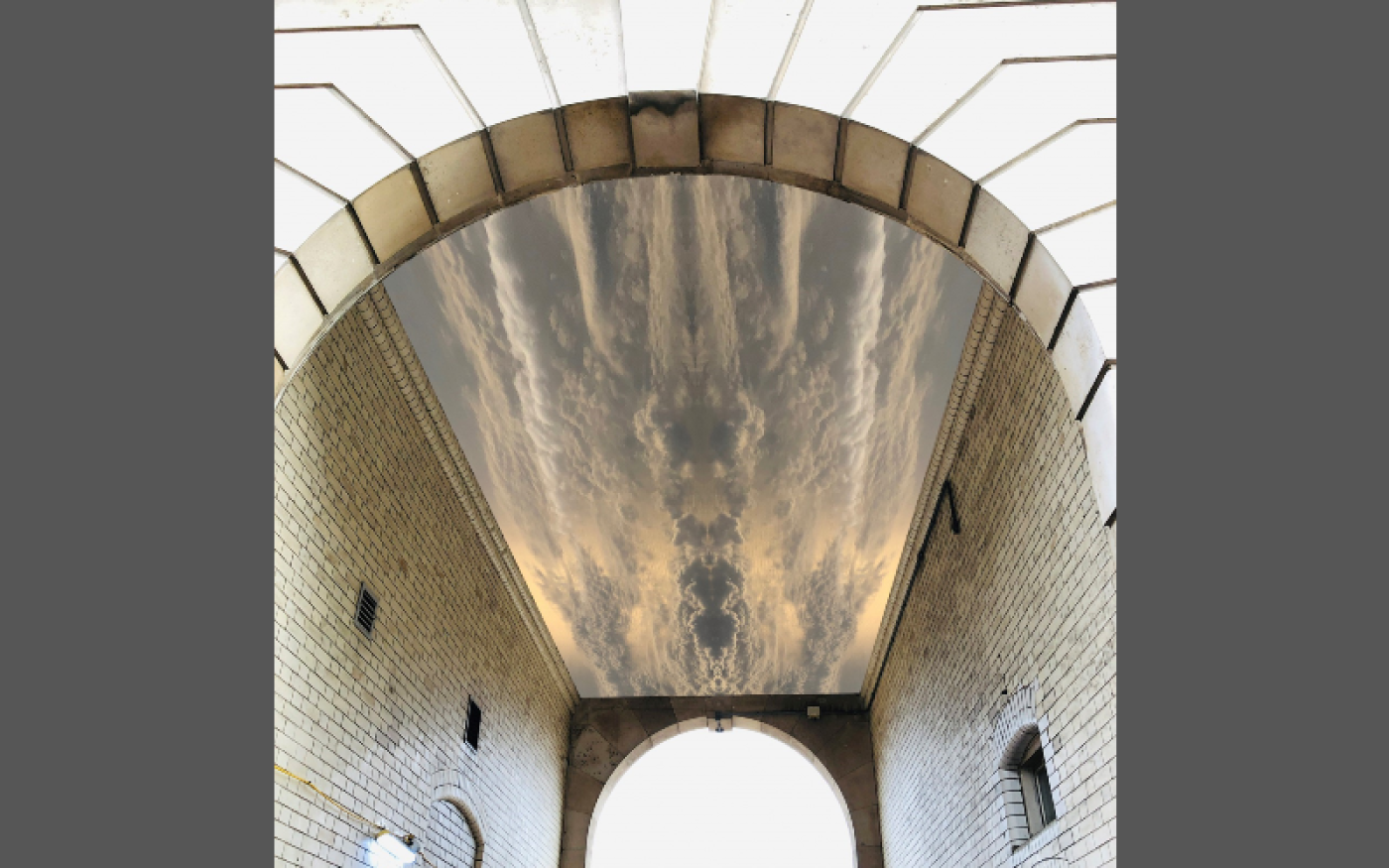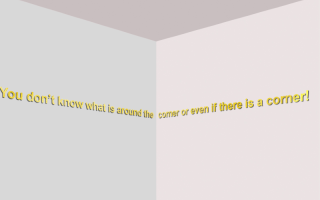Annie Cattrell is the lead artist for the ION-DRI public art programme. She is creating three artworks for the building.
Annie Cattrell has been embedded in the design process since April 2020, collaborating closely with the project architects Hawkins\Brown and working alongside a steering group of academics and staff from across the ION-DRI programme. To create the main artwork commission, she has had the opportunity to immerse herself in the research around the work of the academics and researchers to understand the experiences of patients and visitors who are visiting the building.

Everything is Connected early concept visualisation

Everything is Connected early concept visualisation

Everything is Connected early concept visualisation

Mirror early concept visualisation
Everything is Connected
Everything is Connected will be positioned on an outer highly visible corner of the new building.
The 90-degree corner acts a physical signifier of three-dimensionality, of structural consolidation, a kind of architectural axis. This chosen corner can be clearly seen from Grays Inn Road and many other on-site vantage points. It has a long linier edge on which Everything is Connected will be secured.
“Everything is Connected draws on the metaphor of seismic change to imply the magnitude and scale of what will happen in these new buildings.
The concept of the proposed sculptural work is based on this ambitious development as a locus that is designed to house and support the advancement of neurological research and treatments. It draws and focuses on the metaphor of seismic change (as in geology) and more specifically neurological research to imply the magnitude and scale of what will happen in these new buildings.
The building and inner layout is deliberately designed to foster collaboration in the hope of a paradigm shift in the research into and treatment of patients with neurodegenerative diseases.
The formation of Everything is Connected is drawn clearly from physical dendritic references. Firstly, taken from satellite images of river formations on the surface of the earth and underground mapped drawings of the River Fleet, which runs underneath and nearby to 256 Grays Inn Road. Secondly, from the intimacy of the miniscule stained microscopic neurological images regularly used in the research laboratories at Queen Square Institute of Neurology and the UK Dementia Research Institute. It is the underlying and ever-changing interconnectedness that will be highlighted and celebrated in this gilded sculptural relief.
The work will be made to sit proud of the skin of the actual building, appearing to hover. It will be made in sections, which will be carefully constructed to appear as if it is one piece. Similar to an interlinked puzzle, the sutures in a skull or the Earth’s landmasses slowly breaking and moving apart in the Super Pangaea.
The whole surface of this textured sculptural relief will be gilded with gold leaf to highlight the complexity and interconnections, which will maximise both the absorption and reflection of ambient sunlight and, in the dark, will be spot-lit.
This is, in some ways, reminiscent of the Japanese art of Kintsugi, whereby faults and breakages in ceramics would traditionally be repaired by adding gold to highlight the glued seam fracture lines. Therefore, celebrating the wear and tear of the lived experience, mistakes and chance.
The fabrication will be in a resin with embedded metal fixings, which will be secured directly into the fabric of the precast concrete and brick building.
Mirror
Mirror is a sculptural bass relief (rilievo stiacciato) and will occupy the entrance ceiling area on the archway between Gray’s Inn Road and the new inner courtyard.
It will appear visually related and conceptually linked to Everything is Connected, but will be distinctly different. The concept of Mirror is to embody and reinforce ideas of care, skill and interconnectedness - how the endeavours of many can converge to become one.
Everyday mirrors are designed to reflect what is around them and they also duplicate in reverse. It is this re-examination of what is familiar ‘in reverse’ that will be at the centre of Mirror’s conceptual and physical making.
Mirror acts as a metaphor of how collaboration can transform, and make something whole and complete
The overall form is derived from images captured of the transient behaviour of cloud formations and observing brain dissections. Additionally, looking at the process of the Rorschach ink blot technique, whereby a single wet ink image can be transferred, by folding the base paper, to make the reverse ink blot stain and become one.
These ideas, observations and processes create a connection between the fluidity of chance (i.e. the flux of clouds, anatomical patterns and the wet ink etc.) becoming symmetrical and more than the sum of each part. Therefore, again, acting as a metaphor of how collaboration can transform, and make something whole and complete.
The experiential focus, for the viewer, will be while passing through, and under, this significant entrance and threshold into the new neuroscience centre. Specially-designed LED lighting will encourage them to look up and view Mirror, which will be lit to maximise the colour and undulating bass relief formations. These will be cast in resin, painted and gilded using gold and silver leaf.
Wise Words

Researchers, scientists, clinicians and staff working across the project responded to a questionnaire that Annie circulated. Their thoughts, hopes and expectations, for the new centre, will be reflected in a series of quotes that will be positioned on the walls around the staff areas.
 Close
Close


